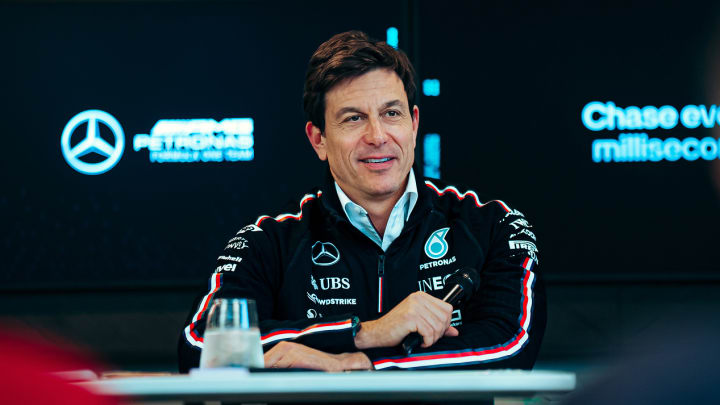F1 News: Toto Wolff Warns of 2026 Regulations - 'Speed Would Definitely Be Too Low'

Mercedes team principal Toto Wolff has offered hope that Formula 1 engineers will eventually bridge the 10-second performance gap projected for the 2026 cars. He emphasized that, as an 'innovation incubator,' F1 will see its cars regain their speed and performance. But despite this, the team chief has admitted that the current regulations would output cars of poor performance. "The speed would definitely be too low," he admits.
In two years, the sport will enter a new era of regulations with fresh rules for both the engine and chassis, presenting teams with an entirely new technological challenge to master. Currently, six engine manufacturers are vying to build the perfect 2026 engine- Red Bull Powertrains, Ferrari, Mercedes, Renault, Honda, and Audi.
While F1 retains the 1.6-liter V6 engine with hybrid ancillaries, the power output will be evenly split between an internal combustion engine and an electric motor. This significant change necessitates a major transformation of the chassis to optimize handling and performance. Consequently, a new set of chassis regulations will also be implemented to complement the changes in the powertrain.
This approach allows teams to concentrate on extracting additional performance through active aerodynamics in both the front and rear wings. This not only enhances aerodynamic efficiency but, also optimizes the new power units' energy harvesting capabilities.
Given that the 2026 car would be slower if the current chassis were used, Wolff emphasized the need for revolutionary chassis regulations to maximize performance. Speaking to Austrian broadcaster ORF and quoted by the German subsidiary of Motorsport.com, he said:
“If you were to implement the current regulations, the speed would definitely be too low."
He continued:
"So that we don’t run out of power, so to speak, we have to have cars that have as little drag as possible on the straights, but still have enough downforce in corners to be fast.”
As current simulations indicate significantly slower lap times, the Mercedes team boss cautions about the potential impact. However, he believes the engineers will inevitably find solutions to overcome the performance deficit. He added:
“What we have at the moment is simply far too slow.
“We sometimes have lap times that are up to ten seconds slower.
“Formula 1 has always been an innovation incubator, and I am convinced that with what the engineers will come up with and, with the [chassis] regulations, which we still have to change, the cars will definitely become fast again."
Wolff further revealed that any potential drop in lap times would be barely noticeable on television. He said:
“It’s still much faster than anything else out there, and you have to leave the church in the church: There is no difference for the television viewer. IndyCars look fast, but they are 20 seconds slower.”
